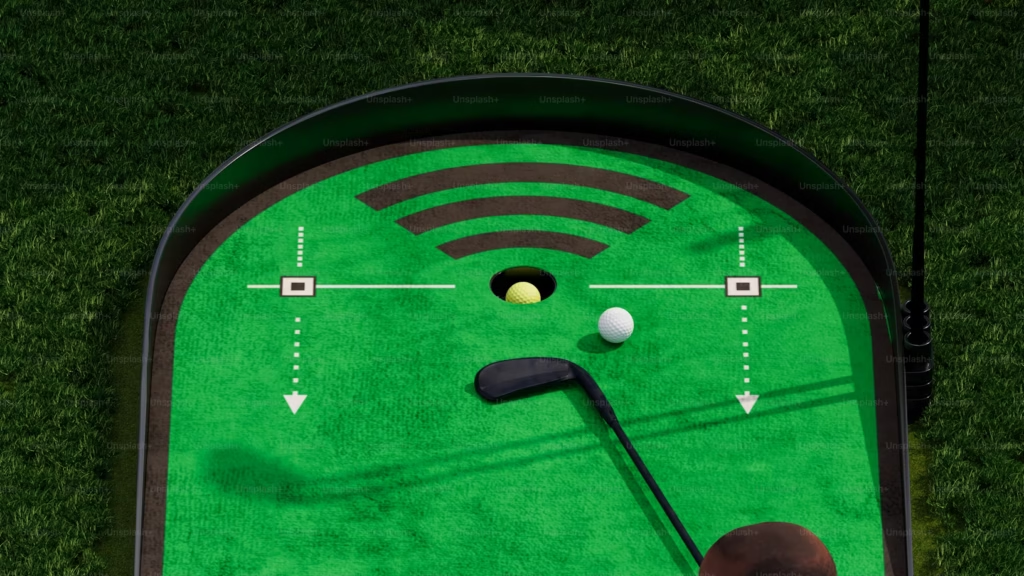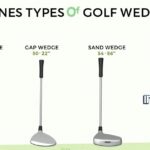Have you ever wondered why some of your golf shots soar high into the sky while others barely get off the ground? The secret lies in understanding one crucial aspect of your equipment: golf club loft. As a fundamental element of club design, loft influences everything from distance to accuracy, making it essential knowledge for players at every level.
In this comprehensive guide, we’ll dive deep into the world of loft angles, exploring how they affect your ball trajectory, the optimal settings for your swing, and how modern technology has revolutionized adjustability. Whether you’re looking to eliminate distance gaps in your bag or simply understand why your shots behave the way they do, this guide will transform your approach to club selection and performance.
Understanding Golf Club Lofts: The Foundation of Your Game
Golf club loft represents the angle of the clubface relative to the vertical plane. This seemingly simple measurement profoundly impacts how your ball flies after contact. Think of loft as your ball’s launching pad – it determines not just how high your shot goes, but how far it travels and how quickly it stops on landing.

The Science Behind Loft Angles
When a club with higher loft strikes the ball, it creates more backspin and sends the ball on a steeper ascent. Conversely, clubs with lower loft produce less backspin and generate a more penetrating ball flight. This relationship explains why your driver (typically 8-12° of loft) sends the ball much farther than your lob wedge (around 58-64° of loft).
“Understanding loft is like having a secret weapon in your golf arsenal. It’s the difference between playing the game and mastering it.” – Phil Mickelson
The impact of loft becomes especially evident when we examine what happens at contact:
- Low loft clubs (drivers, fairway woods) maximize distance by launching the ball with minimal backspin
- Mid loft clubs (mid irons) balance distance with control
- High loft clubs (wedges) prioritize accuracy, spin, and stopping power over distance
Key Terminology Every Golfer Should Know
Before diving deeper, let’s clarify some essential loft-related terms that will appear throughout this guide:
- Static loft: The loft built into the club during manufacturing
- Dynamic loft: The actual loft at impact, influenced by your swing
- Effective loft: How the club performs based on design factors beyond just the loft angle
- Launch angle: The angle at which the ball leaves the clubface
- Spin rate: The amount of rotation imparted on the ball, measured in RPM
Understanding these concepts provides the foundation for making informed decisions about your equipment and shot selection.
Read More about Golf Wedge Type and Degrees
Comprehensive Golf Club Loft Chart: Beyond the Basics
Having a reference for standard loft measurements across club types helps establish a baseline for understanding your equipment. Here’s a detailed breakdown of typical loft ranges for modern clubs:

| Club Type | Loft Range | Typical Distance | Flight Characteristics |
| Driver | 8°–13° | 230-300 yards | Low launch, maximum distance |
| Fairway Woods | 13°–21° | 180-250 yards | Medium-low launch, distance with some control |
| Hybrids | 16°–27° | 170-230 yards | Medium launch, versatility from various lies |
| 3-Iron | 18°–21° | 180-210 yards | Low-mid trajectory, less stopping power |
| 4-Iron | 21°–24° | 170-200 yards | Low-mid trajectory, moderate forgiveness |
| 5-Iron | 24°–27° | 160-190 yards | Mid trajectory, improved stopping power |
| 6-Iron | 27°–30° | 150-180 yards | Mid trajectory, good balance of distance/control |
| 7-Iron | 30°–34° | 140-170 yards | Mid-high trajectory, increased control |
| 8-Iron | 34°–38° | 130-160 yards | High trajectory, excellent stopping power |
| 9-Iron | 38°–42° | 120-145 yards | High trajectory, precise distance control |
| Pitching Wedge (PW) | 42°–46° | 100-130 yards | High trajectory, maximum control |
| Gap Wedge (GW) | 48°–52° | 85-110 yards | Very high trajectory, excellent stopping |
| Sand Wedge (SW) | 54°–58° | 70-95 yards | Extreme height, maximum spin for bunkers |
| Lob Wedge (LW) | 58°–64° | 55-85 yards | Highest trajectory, specialized short game |
How Manufacturers Vary Lofts Between Brands
It’s crucial to understand that these ranges represent industry standards, but significant variation exists between manufacturers. Modern club designers often employ “loft jacking” – strengthening lofts (reducing the angle) to create the impression of increased distance.
For example, today’s 7-iron might have the loft of what was traditionally a 6-iron or even 5-iron just two decades ago. This marketing strategy allows brands to advertise longer distances, but it can create confusion when comparing clubs across different manufacturers.
Club fitting experts recommend focusing less on the number stamped on the sole and more on the actual loft degrees and how they fit into your overall set composition. This approach ensures proper gapping between clubs and optimizes your performance across all situations.
Traditional vs. Modern Lofting Approaches
The evolution of loft standards reflects changing priorities in the golf equipment industry:
Traditional lofting (Pre-2000s):
- Consistent 4° gaps between irons
- PW typically 48°
- Focus on shot-making versatility
- Less emphasis on maximum distance
Modern lofting (Current):
- Strengthened lofts across the board
- PW often 43-45°
- Emphasis on distance marketing
- Technology compensating for lower launch
This shift has created the need for additional wedges to fill distance gaps at the higher-lofted end of many players’ bags, with the gap wedge becoming a standard addition to bridge the expanding space between pitching and sand wedges.
Discover more about Best Golf Club Brands
The Physics of Loft: How Angle Changes Everything
The relationship between loft and ball flight follows predictable physical principles. Understanding these dynamics helps you select the right clubs and make smarter decisions on the course.
Launch Angle Relationships with Different Swing Speeds
Swing speed directly influences optimal loft selection. As a general rule:
- Fast swing speeds (100+ mph): Benefit from lower lofts (8-10.5° driver)
- Moderate swing speeds (85-100 mph): Perform best with medium lofts (10.5-12° driver)
- Slower swing speeds (below 85 mph): Need higher lofts (12-14° driver)
This relationship exists because faster swings naturally create more lift and backspin, while slower swings need additional loft to achieve optimal launch conditions.
Backspin Generation and Its Impact
Loft dramatically affects backspin, which influences both distance and control:
- Low-lofted clubs (8-18°): 2,000-3,000 RPM of backspin
- Mid-lofted clubs (19-40°): 3,000-6,000 RPM of backspin
- High-lofted clubs (41°+): 6,000-10,000+ RPM of backspin
The right amount of backspin helps your ball stay airborne longer (increasing distance) while also providing stopping power when hitting approaches to greens. Too much spin reduces distance and makes your shots more vulnerable to wind; too little prevents proper ball flight and reduces control.
Angle of Attack Considerations
Your angle of attack – whether you hit down, level, or up on the ball – interacts with loft to determine actual launch conditions:
- Downward attack angle + high loft = extremely high launch, maximum spin
- Downward attack angle + low loft = low launch, minimal carry distance
- Upward attack angle + low loft = optimal driver distance for many players
- Upward attack angle + high loft = excessive height, distance loss
This interaction explains why driver fitting is so crucial – finding the perfect match between your natural attack angle and the club’s loft optimizes your distance potential.
Strategic Loft Gapping: Eliminating Distance Gaps in Your Bag
One of the most overlooked aspects of club selection is proper loft spacing between clubs. Ideally, you want consistent yardage gaps throughout your set to ensure you’re covered for any distance the course demands.

How to Properly Space Your Clubs
For most golfers, the goal is 10-15 yard increments between consecutive irons and 15-20 yard gaps between wedges. To achieve this:
- Start by measuring your actual carry distances with each club
- Identify any inconsistent gaps (e.g., only 5 yards between 7 and 8-iron, but 25 yards between PW and SW)
- Consider adjusting your set composition to eliminate problems
A properly gapped set might look like this:
Driver: 260 yards
3-wood: 235 yards (25-yard gap)
5-wood/2-hybrid: 220 yards (15-yard gap)
3-hybrid: 205 yards (15-yard gap)
4-iron: 190 yards (15-yard gap)
5-iron: 180 yards (10-yard gap)
6-iron: 170 yards (10-yard gap)
7-iron: 160 yards (10-yard gap)
8-iron: 150 yards (10-yard gap)
9-iron: 140 yards (10-yard gap)
PW (45°): 125 yards (15-yard gap)
GW (50°): 110 yards (15-yard gap)
SW (54°): 95 yards (15-yard gap)
LW (58°): 80 yards (15-yard gap)
Identifying and Fixing Problematic Gaps
Common gapping issues include:
- The Long Iron Gap: Many players have a significant distance dropoff between their longest iron/hybrid and their fairway wood
- The Wedge Gap Problem: Modern strengthened lofts often create excessive distance between pitching wedge and sand wedge
- Inconsistent Mid-Iron Spacing: Sometimes certain irons in your set may perform too similarly to others
Solutions might include:
- Adding specialized clubs (like a gap wedge or additional hybrid)
- Considering custom loft adjustments to standardize spacing
- Removing redundant clubs that duplicate distances
“Perfect gapping is like having the right tool for every job. It eliminates guesswork and builds confidence.” – Butch Harmon
Modern Adjustable Loft Technology: Game-Changing Innovation
One of the most significant advancements in golf equipment is the development of adjustable hosel technology, allowing players to modify loft without purchasing new clubs.

In-depth Analysis of Leading Adjustable Systems
Modern adjustable drivers typically offer:
- Loft range: Usually ±1.5° from the stated loft
- Lie angle adjustments: Helping with shot shape tendencies
- Face angle settings: Influencing the club’s appearance at address and initial shot direction
- Weight distribution options: Some models include movable weights to further customize performance
Leading manufacturers implement these systems differently:
- TaylorMade’s Loft Sleeve: 12 different positions affecting loft, lie, and face angle
- Callaway’s OptiFit: Independent loft and lie adjustments
- Titleist’s SureFit: Extensive matrix system allowing 16 different configurations
- Ping’s Trajectory Tuning: Straightforward loft adjustment with minimal complexity
Real Performance Differences: Fixed vs. Adjustable
Research indicates adjustable clubs provide meaningful performance benefits without significant drawbacks:
Advantages of adjustability:
- Ability to fine-tune launch conditions
- Adaptation to changing swing characteristics over time
- Course-specific optimization possibilities
- Cost savings compared to purchasing multiple clubs
Potential disadvantages:
- Slight weight increase (typically 5-10 grams)
- Minimal reduction in energy transfer efficiency
- Learning curve for optimal settings
For most golfers, the benefits far outweigh these minor drawbacks, making adjustable technology valuable for optimizing performance.
How to Properly Utilize Adjustable Settings
To get the most from adjustable technology:
- Establish a baseline: Start with standard settings and document performance
- Make single changes: Adjust only one variable at a time to isolate effects
- Test thoroughly: Hit multiple shots with each setting to account for normal variation
- Consider conditions: Different settings may work better for various courses and weather
- Re-evaluate periodically: Your optimal settings may change as your swing evolves
Optimal settings for most golfers include:
- Higher loft for slower swing speeds, soft conditions, or when maximum height is needed
- Lower loft for faster swing speeds, firm conditions, or windy days
- More upright lie for players who tend to pull or hook the ball
- Flatter lie for players who tend to push or slice
Performance Impact: Matching Lofts to Your Swing
Your individual swing characteristics should heavily influence loft selection for maximum performance.

Swing Speed Correlations with Optimal Loft
Research consistently shows the relationship between swing speed and ideal driver loft:
| Swing Speed | Optimal Driver Loft | Typical Carry Distance |
| 75-85 mph | 12-14° | 200-220 yards |
| 85-95 mph | 10.5-12° | 220-250 yards |
| 95-105 mph | 9.5-10.5° | 250-275 yards |
| 105+ mph | 8-9.5° | 275+ yards |
This correlation extends beyond drivers. Fast swingers often benefit from slightly weaker lofts in their irons to control trajectory, while slower swingers may need stronger lofts to achieve sufficient distance.
Attack Angle Considerations
Your angle of attack – whether you hit down or up on the ball – dramatically influences optimal loft selection:
- Steep attackers (hitting down 4°+ with driver): Need 1-2° more loft than standard recommendations
- Shallow attackers (hitting level or slightly up): Can use standard loft recommendations
- Upward attackers (hitting up 2°+ with driver): Often benefit from 1-2° less loft
This relationship becomes particularly crucial with drivers, where modern teaching emphasizes hitting up on the ball for maximum distance.
Shaft Flex Interaction with Loft
The relationship between shaft characteristics and loft creates complex performance interactions:
- Stiffer shafts tend to reduce dynamic loft at impact
- More flexible shafts often increase dynamic loft
- Heavier shafts typically reduce ball flight height
- Lighter shafts generally increase launch angles
These interactions explain why proper club fitting considers both loft and shaft characteristics simultaneously rather than treating them as separate variables.
The Evolution of Loft Design: What’s Changed and Why
The history of golf club loft reveals fascinating trends that mirror broader technological and philosophical shifts in the game.
Historical Progression of Loft Standards
Golf club lofts have evolved dramatically:
1920s-1950s:
- Drivers: 10-12°
- 5-iron: 32-34°
- Pitching wedge: 50-52°
- Limited wedge options beyond PW
1960s-1980s:
- Drivers: 9-11°
- 5-iron: 30-32°
- Pitching wedge: 48-50°
- Introduction of specialized sand wedges
1990s-2000s:
- Drivers: 8.5-10.5°
- 5-iron: 28-30°
- Pitching wedge: 46-48°
- Expanded wedge options including gap and lob wedges
2010s-Present:
- Drivers: 8-12° (with adjustability)
- 5-iron: 23-27° (significantly stronger)
- Pitching wedge: 43-46° (dramatically stronger)
- Specialized wedges with precise loft gapping
This progression shows the consistent trend toward stronger lofts (smaller angles) in the pursuit of distance marketing.
How Modern Materials Have Revolutionized Loft Capabilities
Technology has enabled dramatic changes in how loft functions:
- Multi-material construction allows weight redistribution to maintain launch despite stronger lofts
- Variable face thickness technology helps generate consistent ball speeds across the face
- Lightweight materials like carbon fiber permit more strategic weight placement
- Aerodynamic designs reduce drag and improve club head speeds
These advancements explain how modern clubs can maintain playability despite significantly strengthened lofts compared to previous generations.
Next-Generation Technology Trends
The future of loft design appears focused on several emerging areas:
- Artificial intelligence optimization of face design for specific loft ranges
- Material-specific loft adjustments based on a player’s typical impact conditions
- Dynamic loft technology that potentially adjusts during the swing itself
- Personalized loft mapping using launch monitor data to create truly custom specifications
These innovations suggest that loft technology will continue evolving toward ever-more-personalized configurations.
Expert Loft Selection Strategies: Course Management Advantage
Understanding loft gives you a significant advantage in navigating different course conditions and challenges.

Loft Choices for Specific Course Conditions
Smart players adjust their loft strategy based on conditions:
Firm, fast courses:
- Consider lower lofted drivers for additional roll
- Use bounce and loft strategically in wedges to prevent digging
- Embrace run-up shots with mid-irons rather than high-flying approaches
Soft, receptive courses:
- Higher lofted drivers maximize carry distance
- Aggressive attack angles with high-lofted wedges stick approaches close
- Full advantage of stopping power with higher lofted clubs
Elevated greens:
- Additional loft helps hold putting surfaces
- May require clubbing up to account for the increased flight requirements
- Consider specialized high-loft utility options for specific holes
Downhill approaches:
- Reduced loft controls distance in downhill situations
- May need to account for increased roll-out
- Strategic ball position adjustments help manage effective loft
Weather Factors Influencing Loft Decisions
Environmental conditions demand loft adaptations:
Wind strategies:
- Headwind: Club up and swing easier to maintain loft advantage
- Tailwind: Reduce loft to prevent ballooning
- Crosswind: Adjust loft based on shot shape requirements
Temperature effects:
- Cold: Ball flights lower; consider additional loft
- Hot: Ball flies farther; potential need for reduced loft
- Altitude considerations require similar adjustments
Tournament-Tested Professional Strategies
Elite players employ sophisticated loft strategies:
- Course-specific setups: Adjusting driver loft based on fairway firmness and width
- Specialized wedge configurations: Some pros carry different wedge sets for various course types
- Strategic club removal: Sometimes eliminating certain clubs to add specialized lofted options
- Launch condition optimization: Using launch monitor data to perfect loft for specific tournaments
These approaches demonstrate how seriously professionals take loft as a strategic variable rather than just a static equipment specification.
Pro Shop Guide: How to Test and Compare Lofts
When purchasing new clubs, a methodical approach to loft evaluation ensures optimal performance.
Essential Questions for Club Purchases
Before investing in new equipment, ask:
- What are the actual loft specifications of these clubs, not just the numbers on them?
- How do these lofts compare to my current set?
- Will these create any problematic gaps in my distance progression?
- Does this loft match my swing characteristics and typical playing conditions?
- What adjustability options exist if the standard loft isn’t optimal?
These questions prevent costly purchasing mistakes and ensure your new equipment enhances your game.
Meaningful Comparisons Using Launch Monitors
Modern launch optimization technology provides objective data for loft decisions:
- Ball speed: Measures energy transfer efficiency
- Launch angle: Shows actual flight path regardless of stated loft
- Spin rates: Indicates control and distance potential
- Descent angle: Reveals stopping power and roll characteristics
- Dispersion patterns: Demonstrates forgiveness across different lofts
When testing, focus on consistency across multiple shots rather than your single best strike, as this better represents actual playing conditions.
Avoiding Common Purchasing Mistakes
Frequent errors in loft-related purchases include:
- Focusing on distance alone instead of complete performance metrics
- Ignoring gapping implications when purchasing individual clubs
- Assuming newer is always better without comparing actual specifications
- Believing the number on the club rather than its actual loft angle
- Purchasing without testing in realistic conditions
Avoiding these pitfalls leads to more satisfied equipment choices and better on-course performance.
Conclusion: Leveraging Loft Knowledge for Your Best Game
Understanding golf club loft transforms from a technical curiosity into a powerful performance advantage when applied strategically. From optimizing your driver setup to perfecting wedge selection for specific course conditions, loft knowledge empowers you to make smarter decisions both in equipment purchases and on-course strategy.
The perfect loft configuration depends on your individual characteristics – swing speed, angle of attack, typical playing conditions, and performance priorities. There’s no universal “correct” loft for any club, only the optimal loft for your unique situation.
As you apply this knowledge, remember that loft is just one component of a comprehensive equipment strategy. When harmonized with proper shaft selection, grip sizing, and club fitting, optimal loft delivers its maximum benefit, helping you unlock your full potential on the course.
Actionable Next Steps
To implement your enhanced loft understanding:
- Document your current lofts and corresponding carry distances
- Identify any problematic gaps requiring adjustment
- Consider professional launch monitor assessment to verify optimal settings
- Experiment with adjustable options if available
- Develop course-specific strategies based on loft knowledge
With these approaches, you’ll transform theoretical knowledge into practical performance improvement, making every club in your bag more effective.

Mary Siegel is an experienced blogger at Info Sports Fact, specializing in delivering insightful and engaging sports content. With a passion for uncovering facts and trends across various sports, she brings clarity and depth to every post.




